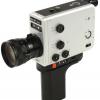-
Posts
7 -
Joined
-
Last visited
Profile Information
-
Occupation
Student
-
Location
Spain
-

New in the super 8 world - Some questions
Antonio Barral replied to Antonio Barral's topic in Super-8
Wow, I never thought my camera would be compatible with those films! In fact, they look pretty good! But is there any reversal colour stock available? Cause the costs of processing negative stock are quite higher...- 33 replies
-

New in the super 8 world - Some questions
Antonio Barral replied to Antonio Barral's topic in Super-8
Mmmm... actually, I have to do lots of tests... Mainly, cause I don't even know if the camera and the photometer work properly. But first of all, I have to get the money, for an student in Spain this is a quite expensive passion (in fact I'm desperated to find some expired film) ... :rolleyes: Anyway, thanks a lot for all the information, this has helped me more than you can imagine! Regarding the exposure issue, I've always felt quite insecure about the manual exposure control, cause I have realized how much does the photometer lectures (in the automatic mode) vary when moving along a place... So maybe when I film something homogeneously lit, I'll try to set manually the exposure. Thanks again! :D- 33 replies
-

New in the super 8 world - Some questions
Antonio Barral replied to Antonio Barral's topic in Super-8
Nice! That was my only concern with those high ASA films! :) So just to be sure, no filter and no exposure variation? On automatic exposure it should be fine (for 200T and 500T)? Thanks again!- 33 replies
-

New in the super 8 world - Some questions
Antonio Barral replied to Antonio Barral's topic in Super-8
Wrth knowing it! But, as my camera recognizes only until 160 ASA, how would react with a 200 ASA film? Exposing it as a 160 one?- 33 replies
-

New in the super 8 world - Some questions
Antonio Barral replied to Antonio Barral's topic in Super-8
O yeah! The 50D! Actually, I was thinking about trying this new film stock... Anyway, I'll need and 80A filter for indoor filming...- 33 replies
-

New in the super 8 world - Some questions
Antonio Barral replied to Antonio Barral's topic in Super-8
Thanks a lot for answering so soon! Anyway, I realiced I have to learn too many things (although I have some experience in filming with digital), so the next few days I'll be devoted to reading some books about super 8 I found, instead of overwhelming the forum with my dumb questions... :rolleyes:- 33 replies
-
Hi there! First of all, I hope my questions aren't too stupid, but I'm a complete newbie in the super 8 world and I've got plenty of doubts. :unsure: I've recently bought through ebay a Braun Nizo 561 macro (which is in full working order) for a nice price (at least is what I think, compared with the prices of other ones...), which included the ultrawide lens, a Skylight-filter and a close-up lens (which purpose I don't know). In addition, I got 1,35 V wein cells for the photometer and some 2004 expired Kodachrome 40 cartridges (I know it is not processed anymore, at least in colour, but it was almost free and I wanted something cheap for starting and testing the camera). Before that, I had already done some research, with the help of Google and this forum, about the ASA, the film, the process, how the camera works... and I also found the manual and read it. All that solved many problems I faced, but I'm still not sure about some. 1) The focal lenght. A very general and probably very stupid question: What it is exactly used for? When do I have to change it? 2) The ASA. Ok, I understand the theorical meaning, but I do not know how can I control it. For example, Kodachrome 40 is ASA 40 for tungsten light and ASA 25 for daylight. So, does the camera automatically find out the requiered ASA and do whatever is needed? Or do I need to change manually anything (e.g. the exposure, the filter...) in order to get fine images? 3) Filters. The manual states that super 8 film is balanced for tungsten, and for filming in dayligt you should only turn the filter switch to the "sun" symbol... I'm not sure if it is still true today for every type of film... I also got a skyligt filter (1A E49), and I'd like to know if it must be used when there is too much light or if it is enough with the built-in filter. Sorry for being so ignorant and quite chaotic, I hope anyone can help me! :rolleyes: Thanks in advance!
- 33 replies


